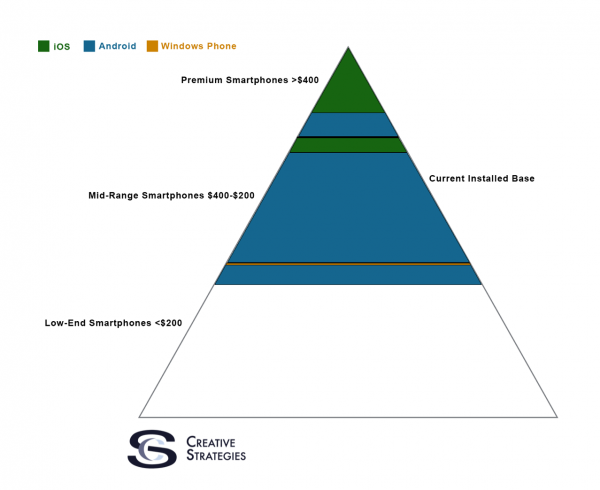This is the perfect way to visualize the current smartphone landscape. While Apple has "only 20%," it completely dominates the premium end. Android dominates the rest of the current installed base (mostly the mid-range). The low-end market is all up for grabs.
Ben Bajarin brings up the important questions for Android going forward:
Google has a base of rapidly maturing customers (just over a billion of them) who will continue to expect innovation around the platform in areas they consider valuable. Areas around cloud, imaging, sensors, and so much more. Android’s current user base is increasing in their sophistication. As computing advances, so should Android for this customer set. Yet, in this next phase, Google is going to also want Android to appeal to a first time smartphone user, say a farmer in Africa, for example. So the question is, how does Google evolve Android to cater to both their most sophisticated, demanding, and profitable existing customers, and a first time customer in Africa who is absolutely not PC literate and may not be literate at all? This creates a fundamental problem at a platform level and at a business model level, for Google. This is why I say we can’t make assumptions about which platform will win with the next two billion. The user base in question is using feature phones today. They make calls and have type literacy around 10 key and or radio/TV dials. This is the extent of their technical literacy with electronics. It is in addressing this next phase of mobile where I believe the Android schism happens.
Could it be an Android fork like Cyanogen has the most potential in this next phase? Could it be Windows Phone has an opportunity? Or maybe a web platform version like FireFox OS, that simplifies everything to web apps? Or perhaps Google figures it out, or comes up with something completely different than Android to address this new set of customers. The point is, we have no idea. It is a green field. It is uncharted territory for computing.
